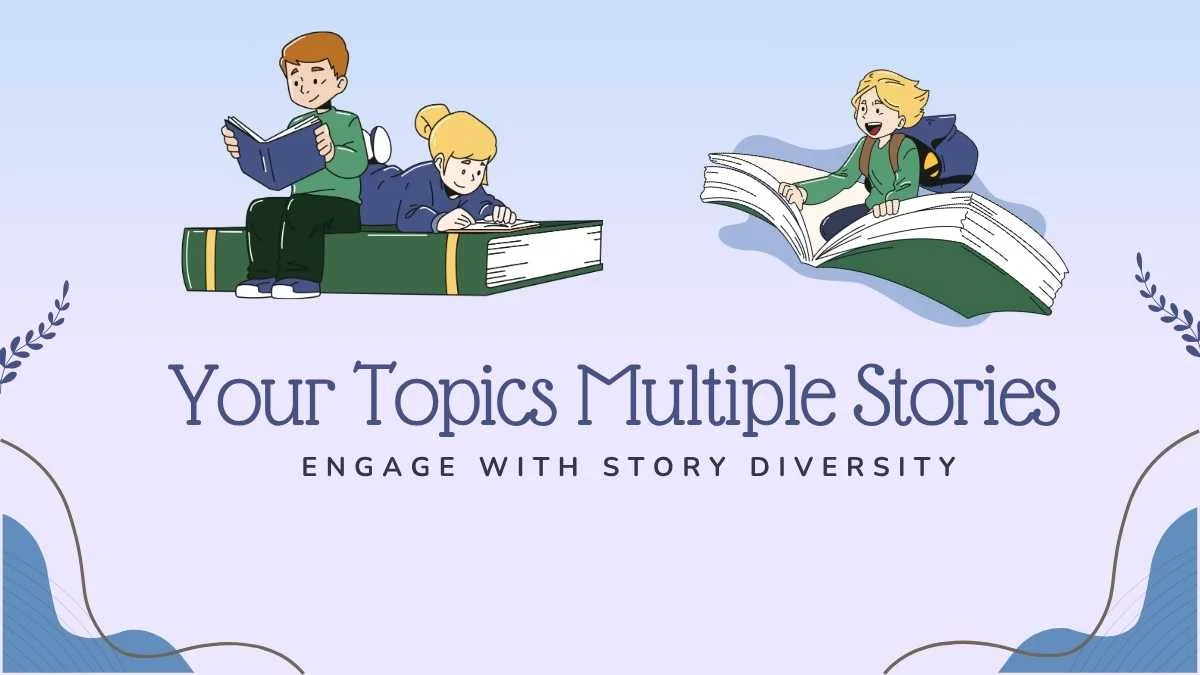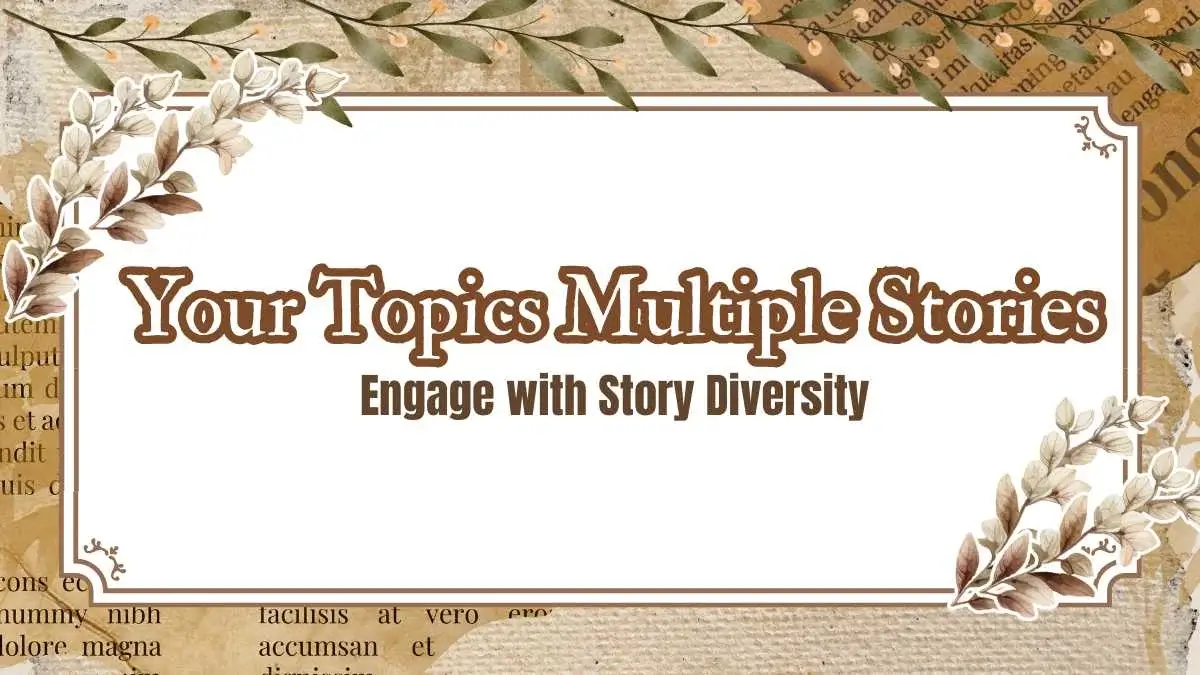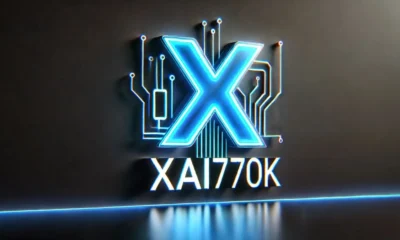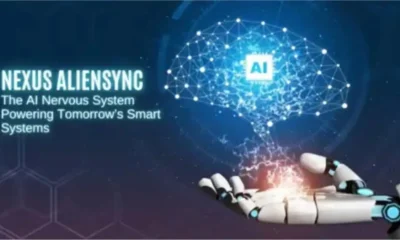EDUCATION
Your Topics Multiple Stories: Engage with Story Diversity

In a world overwhelmed with fragmented information and rapid content consumption, “Your Topics Multiple Stories” serves as a timely reminder of the power of storytelling across diverse domains. This concept isn’t just a catchy phrase — it represents a holistic framework that explores various facets of life, society, and knowledge through thematic, interconnected narratives. From health and technology to culture and education, the idea of multiple stories within a singular topical lens offers a rich tapestry of insights, perspectives, and voices.
Introduction: What Does “Your Topics Multiple Stories” Mean?
“Your Topics Multiple Stories” is a storytelling philosophy rooted in diversity and relevance. It means that for any given subject or area of interest, there are countless angles, perspectives, experiences, and narratives to be explored. It invites creators to go beyond the surface and craft multiple layers of content that speak to different segments of an audience while staying true to a central theme.
For instance, if your topic is health and wellness, multiple stories could include personal recovery journeys, scientific research breakdowns, interviews with professionals, day-in-the-life vlogs, nutrition guides, and cultural health practices. Each story enriches the core topic with depth, relatability, and dimension.
Why Multiple Stories Matter in Content Strategy
1. Increased Engagement Through Relatability
Various individuals relate to various structures and patterns. Some readers have a liking for data-driven articles, but others like anecdotes, interviews, or visual reporting. When you present a variety of stories, there is a higher probability of your content affecting different types of audiences.
2. SEO and Discoverability
Writing on other shades of the same subject increases your keyword environment, which will benefit your appearance in a search engine. As users browse various elements of a subject, your collection of stories that are related to one another will get them to discover more.
3. Building Thought Leadership
Authority comes out of depth. Write several stories about a subject, and this captures your full knowledge of a subject matter, which is an indication to both the audience and indexed to search engines that you are a veritable and insightful source of information.
4. Sustained Content Lifespan
The foundation of an evergreen content tree can be comprised of a single topic. Rather than a standalone asset, you produce a set of stories that continue to attract, engage, and convert as time goes on.
Tools to Streamline Multi-Story Content
To control and expand this strategy, the producers of content may use such tools as:
- Content Calendars (e.g., Trello, Asana, Notion) where the story forms could be arranged, as well as the timing of publishing.
- Artificial Intelligence writing Automation to reuse the original written material in different forms.
- Graphic Design tools with a fast visual adaptation as Canva.
- SEO Tools (ex, Ahrefs, SEMrush) to monitor the keyword clustering and performance.
- Analytics Dashboards to track engagement with various stories and platforms.

Real-World Examples
1. Travel Blogging
Topic: Iceland
- Story 1: A photo journal of Iceland’s Golden Circle
- Story 2: A guide to budget travel in Reykjavík
- Story 3: The history of Viking culture in Iceland
- Story 4: Sustainable tourism practices in the Arctic North
Each piece targets different interests—photographers, budget travelers, history buffs, and environmentalists—while reinforcing the central theme.
2. Tech Startups
Topic: AI in Healthcare
- Story 1: Case study of a startup using AI for cancer diagnosis
- Story 2: Interview with an AI ethics expert
- Story 3: Explainer video on how machine learning models work
- Story 4: Infographic on the rise of digital health startups post-pandemic
This multifaceted approach creates a rich knowledge hub around a single topic.
Challenges and Considerations
Although the approach of “Your Topics Multiple Stories” has numerous advantages, it poses some difficulties at the same time, both to the writers and the editors:
- Coherence: It is difficult to have one tone and one message with several sub-narratives.
- Preventing Overwhelm: The readers can get overwhelmed when the information is not organized properly.
- Depth Vs Brevity: The storylines must carry meaning, without overextending the story in too many words, to make the composition too lengthy.
Why This Approach is the Future
As the AI-created content becomes a stronger force, originality and multi-perspective depth are emerging as main differentiators. The internet is overinflated with basic, listicle-based articles; however, the audience is getting more attracted to long-form, insightful articles.
“Your Topics Multiple Stories” is not only a technique – it is a paradigm shift. It challenges content producers to think, research, and write inclusively. It is about leaving the chamber of echoes and becoming a world of mottled truths.
Tips to Content Writers Who Adopt the “Your Topics Multiple Stories” Model
- Choose a theme to start with – A theme should be clear.
- Conceptualize potential points of view – History, science, emotion, personal story, policy, etc.
- Do multi-source investigation research – Do not rely only on one source of news or a research paper.
- Adopt a modular format set – dividing into sensible chunks.
- Edit using a standard voice – Continuity and flow.
Final Thoughts
“Your Topics Multiple Stories” are not just a strategy of content – they are a philosophy of enriched communication. When living in a world where the attention span is short, and yet the desire to find meaning is great, then it is not only wise, but necessary, to craft the stories that resemble not only the complexity, diversity, but also humanity.
Whether you are a journalist, teacher, blogger, or business communicator, the already mentioned mindset the “Your Topics Multiple Stories,” will not only improve your writing, but also will promote a feeling of better understanding, compassion, and interaction between you and your audience.
-

 BIOGRAPHY7 months ago
BIOGRAPHY7 months agoBehind the Scenes with Sandra Orlow: An Exclusive Interview
-

 HOME1 year ago
HOME1 year agoDiscovering Insights: A Deep Dive into the //vital-mag.net blog
-

 HOME1 year ago
HOME1 year agoSifangds in Action: Real-Life Applications and Success Stories
-

 BIOGRAPHY1 year ago
BIOGRAPHY1 year agoThe Woman Behind the Comedian: Meet Andrew Santino Wife




























